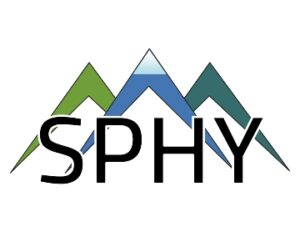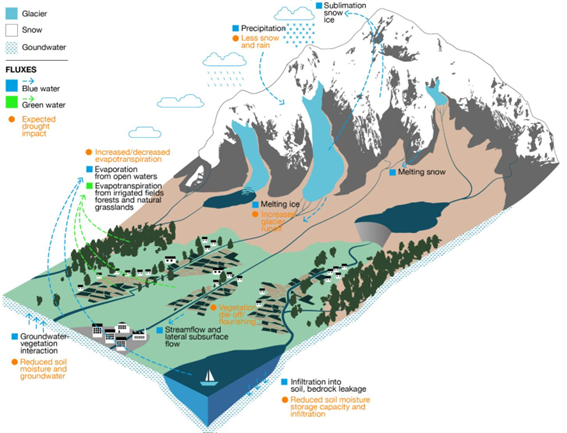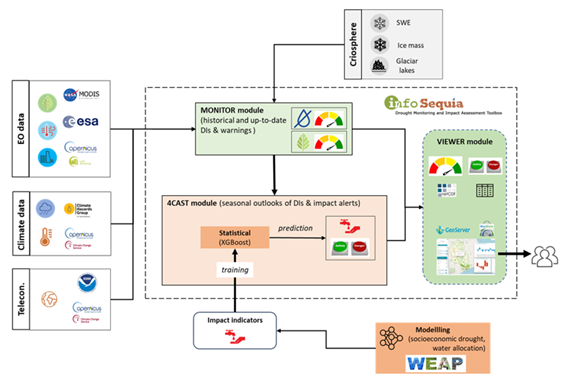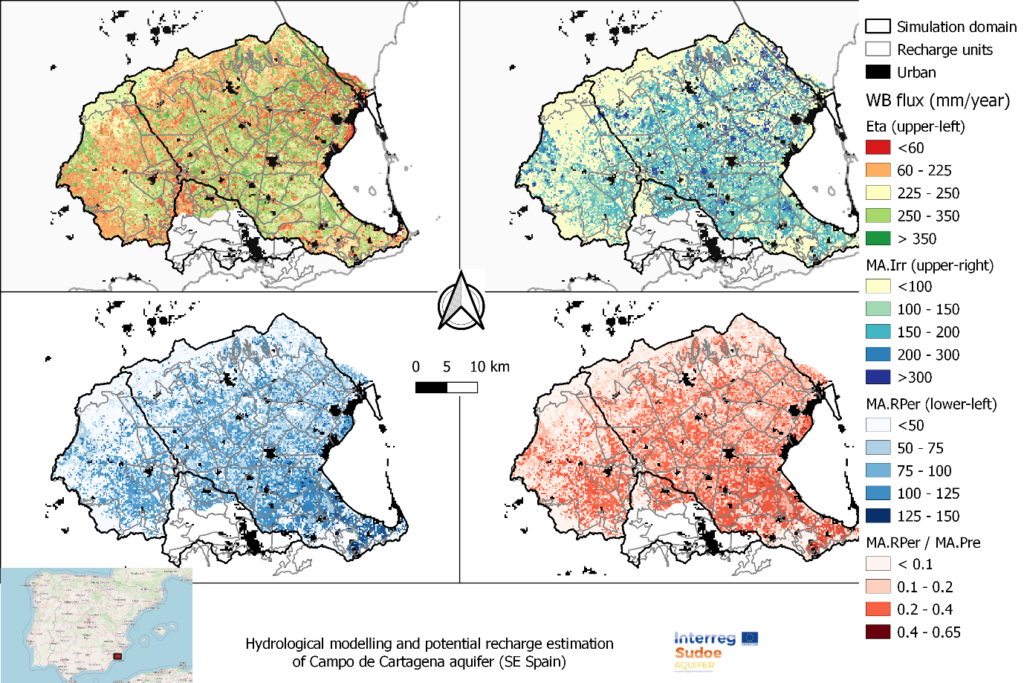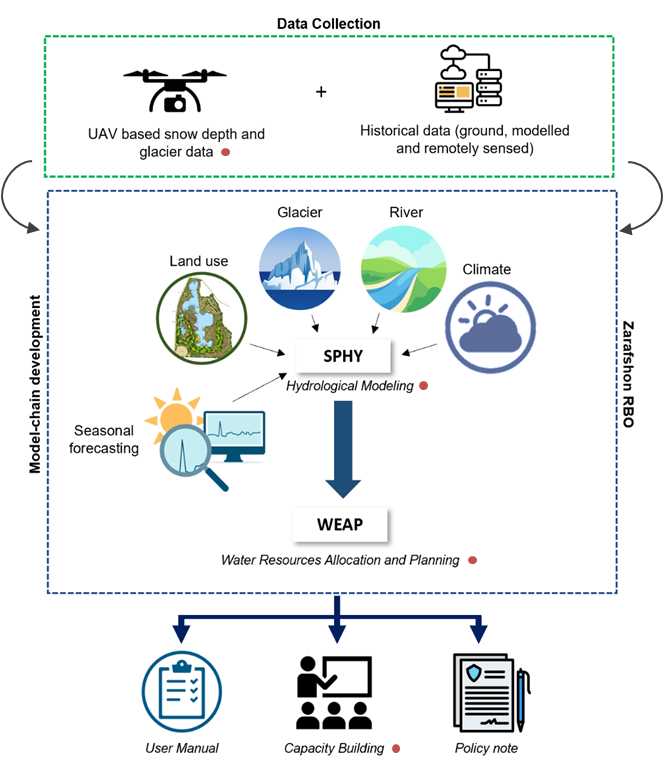A consortium of international development finance institutions led by World bank and including Asian Development Bank (ADB) have signaled their intention to support the financing of the project. The climate risk management approach of the ADB aims to reduce risks resulting from climate change to investment projects by identifying climate change risks to project performance in the early stages of project development and incorporating adaptation measures in the design.
For this project FutureWater undertakes work to analyze climate change risk faced by Rogun HPP and the interaction between climate change, climate-responsive HPP operation, and downstream water resource demand as a 2nd phase following initial due diligence of ADB on available project documentation. The detailed tasks entail:
- Analyze downscaled CMIP6 General Circulation Model (GCM) to understand projected changes in precipitation and heat trends across climate change scenarios in the Rogun dam catchment area. This includes assessment of indicators for likelihood of heatwave and extreme precipitation events.
- Undertake an estimate of the Probable Maximum Flood level in the Rogun dam catchment through event-based simulation modelling factoring in changes to projections for extreme precipitation events and changing hydrological processes due to climate change.
- Estimate the likelihood of annual discharge change based on climate change projections to understand the likelihood of Rogun HPP project economics being negatively affected by declining capacity factor driven by climate change impacts on hydrology.
- Conduct a first order analysis of present and future glacial lake outburst flood risk based on review of studies from reputable sources.
With the results of this analysis, ADB can update earlier climate risk studies and guide investment decisions.
